Regulation of Dietary Supplements and Other Specialized Categories
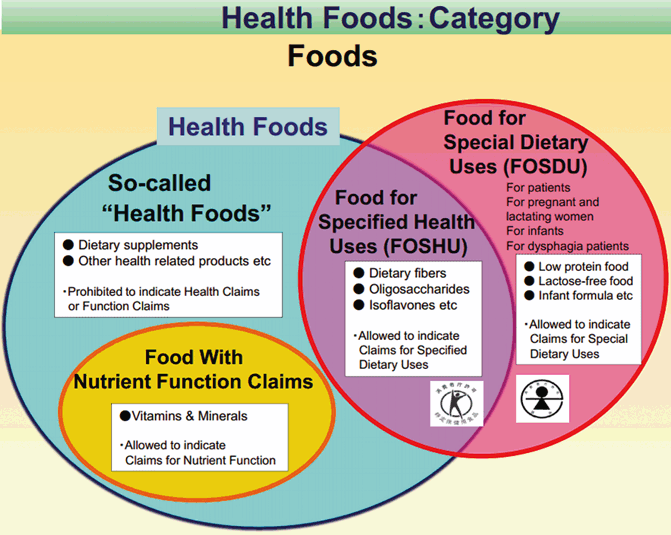
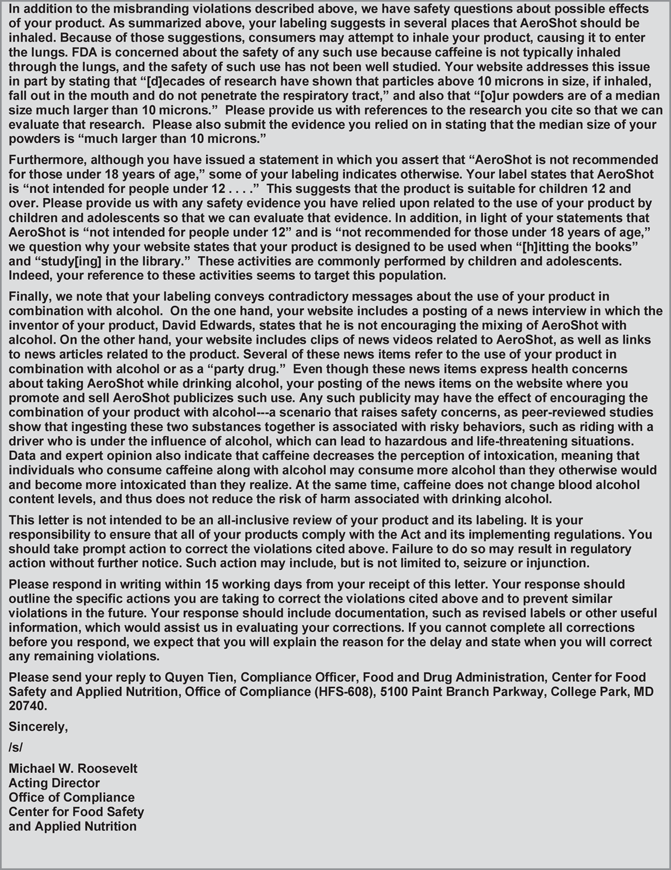
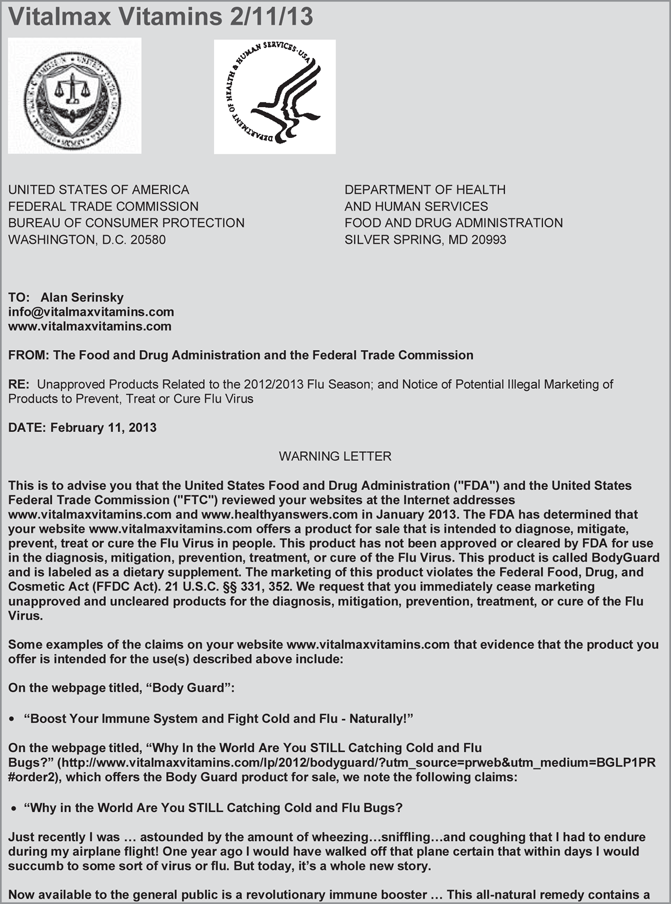
Introduction to DSHEA and New Definitions
Confusion best described the era of enforcement from 1906 until 1994. The FDA confronted a rapidly growing market-ill equipped with the statutory controls needed to protect the public from the unscrupulous and hyperbolic claims of dietary supplement manufactures. It pursued an ad hoc enforcement policy that morphed depending on judicial outcomes. Even the judiciary struggled to develop a unified consistent interpretation of the Act as it related to dietary supplements . This period came to a much needed close with the passage of the DSHEA in 1994.
The passage of DSHEA was prompted by the FDA’s aggressive enforcement of NELA as it applied to dietary supplements . Shortly before the enactment of NELA the FDA grew concerned over the adverse health effects associated with L-tryptophan . L-tryptophan was an ingredient in a supplement associated with an outbreak of eosinophilla myalgia syndrome , which lead to the FDA issuing a consumer advisory warning the public about the supplement. In the wake of the L-tryptophan scare the FDA established a task force to examine dietary supplements. The task force recommended the agency regulate supplements as drug when medicinal claims are made or food additives in the absence of such claims. The expanded ability to make health claims under NELA was not considered by the task force signaling an aggressive enforcement stance by the agency.
Congress intervened and passed DSHEA to restrict the FDA ’s ability to impose strict controls on dietary supplements . DSHEA defined dietary supplement and set a statutory framework for making claims on products. This framework included new Good Manufacturing Practices (GMPs) for the dietary supplement industry. Dietary supplements now must comply with Part 111 rather than Part 110 that outlines food GMPs .
The definition of dietary supplement under DSHEA embraces a wide range of products. Its primary limitation is not in what a dietary supplement may contain, but on its application. Dietary supplement are only those products which are consumed orally . Any product claiming dietary supplement status which is topical, injectable , or inhalable is not a dietary supplement. The term dietary ingredient also broadly encompasses functional ingredients that supplement the diet, but excludes added substances like fillers, preservatives or emulsifiers. Dietary supplements are also required to be labeled as “dietary supplements” and not be misrepresented as conventional foods. The limitations though few continue to provide ample ground for enforcement .
21 USC 201(ff)
(ff) The term “dietary supplement”—
(1) means a product (other than tobacco) intended to supplement the diet that bears or contains one or more of the following dietary ingredients:
(A) a vitamin ;
(B) a mineral;
(C) an herb or other botanical;
(D) an amino acid;
(E) a dietary substance for use by man to supplement the diet by increasing the total dietary intake; or
(F) a concentrate, metabolite, constituent, extract, or combination of any ingredient described in clause (A), (B), (C), (D), or (E);
(2) means a product that—
(A)(i) is intended for ingestion in a form described in Section 411(c)(1)(B)(i); or
(ii) complies with Section 411(c)(1)(B)(ii);
(B) is not represented for use as a conventional food or as a sole item of a meal or the diet; and
(C) is labeled as a dietary supplement; and
(3) does—
(A) include an article that is approved as a new drug under Section 505 or licensed as a biologic under Section 351 of the Public Health Service Act (42 U.S.C. 262) and was, prior to such approval, certification, or license, marketed as a dietary supplement or as a food unless the Secretary has issued a regulation, after notice and comment, finding that the article, when used as or in a dietary supplement under the conditions of use and dosages set forth in the labeling for such dietary supplement, is unlawful under Section 402(f); and
(B) not include—
(i) an article that is approved as a new drug under Section 505, certified as an antibiotic under Section 507 7, or licensed as a biologic under Section 351 of the Public Health Service Act (42 U.S.C. 262), or
(ii) an article authorized for investigation as a new drug , antibiotic, or biological for which substantial clinical investigations have been instituted and for which the existence of such investigations has been made public, which was not before such approval, certification, licensing, or authorization marketed as a dietary supplement or as a food unless the Secretary, in the Secretary’s discretion, has issued a regulation, after notice and comment, finding that the article would be lawful under this Act.
Misrepresentation as conventional food is a particular concern for liquid dietary supplements , such as energy drinks. In the Guidance Document , “Distinguishing Liquid Dietary Supplements from Beverages” the FDA lists a number of factors which will be weighed in assessing intended use. The FDA provides a range of familiar criteria in evaluating intended use, which include for example, “product or brand name, packaging, serving size and total recommended daily intake (i.e., the volume in which they are intended to be consumed), composition, recommendations and directions for use, statements or graphic representations in labeling or advertising, and other marketing practices” (Guidance Document on Liquid Dietary Supplements).18 Simple mistakes such as adding a nutrition facts panel or using a conventional beverage serving size can override the clear statement “dietary supplement” on the label . The result is typically a determination the product is adulterated.
The low barriers of entry combined with potential profits from a large market lead to a wide range of “dietary supplements ” entering the market. Unlike drugs or medical devices where nearly every device or drug is assessed by the FDA prior to entering the market, foods can freely and quickly enter the market. This often leads to products labeled as dietary supplements entering the market with a multitude of applications. This includes an FDA recall and consumer notice about injectable vitamin C and the infamous case of AeroShot which sold inhalable caffeine (FDA Notice on Injectable; FDA AeroShot Warning Letter). If vitamin C is taken orally it is unquestionably a dietary supplement, but offer it as injections and there is no plausible coverage for it under the provisions of DSHEA . AeroShot clouded its opportunity to expand the definition of ingestible by including labeling that stated the product was both inhalable and ingestible. The FDA not only raised safety questions, but also found the labeling misleading.
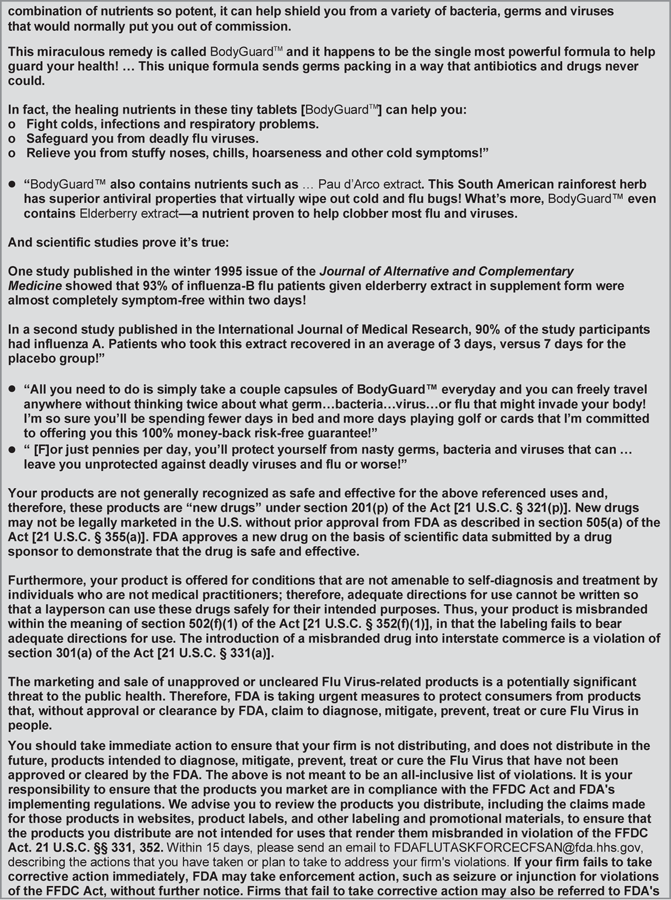
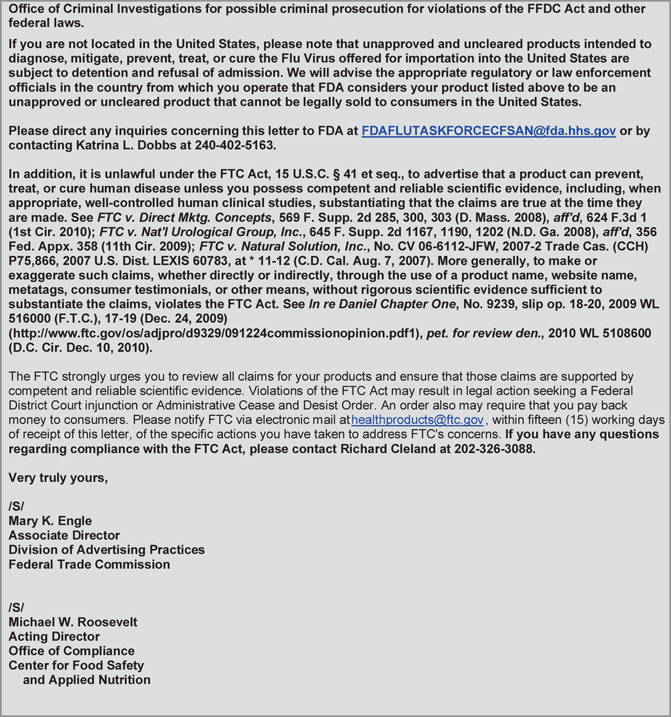
Basis for Finding Adulteration
The one premarket control under DSHEA is also a basis for determining whether a dietary supplement is adulterated. As with most foods the FDA chiefly regulates the safety of dietary supplements through post-market enforcement . For a small group of dietary supplements the FDA requires a 75-day premarket notification . This applies for any “new dietary ingredient ,” a term defined in Section 350b(d). This notification places the burden of proving that the new dietary ingredient is not safe on the manufacturer.
21 USC 350b(d)
(d) “New dietary ingredient ” defined
For purposes of this section, the term “new dietary ingredient ” means a dietary ingredient that was not marketed in the United States before October 15, 1994 and does not include any dietary ingredient which was marketed in the United States before October 15, 1994.
Section 350b requires premarket notification for any supplement containing a new dietary ingredient . There is no exemption for a supplement containing multiple ingredients where only one is deemed “new.” The supplement in its entirety must be withheld from the market until the notification process is complete. In the notification the manufacturer must establish that the new dietary ingredient is safe on one of two grounds. Section 350(b) states that a new dietary ingredient will be deemed adulterated unless all new dietary ingredients in the product have been present without chemical alteration in the food supply as articles used for food or other evidence of safety establishing the dietary ingredient when used under the conditions recommended or suggested in the labeling of the dietary. This is similar to what will be seen in Chapter 6 on food additive exemptions but is distinct.
21 USC 350b(a)
(a) In general
A dietary supplement which contains a new dietary ingredient shall be deemed adulterated under Section 342 (f) of this title unless it meets one of the following requirements:
1.
The dietary supplement contains only dietary ingredients which have been present in the food supply as an article used for food in a form in which the food has not been chemically altered.
2.
There is a history of use or other evidence of safety establishing that the dietary ingredient when used under the conditions recommended or suggested in the labeling of the dietary supplement will reasonably be expected to be safe and, at least 75 days before being introduced or delivered for introduction into interstate commerce, the manufacturer or distributor of the dietary ingredient or dietary supplement provides the Secretary with information, including any citation to published articles, which is the basis on which the manufacturer or distributor has concluded that a dietary supplement containing such dietary ingredient will reasonably be expected to be safe.
The notification will be a combination of food additive petition and GRAS affirmation (see, Chapter 6). The criteria for claiming a new dietary ingredient complies with Section 350b mirrors the GRAS criteria used in assessing food additives . Similar to the GRAS exemption , new dietary ingredients under Section 350b(a) depend on levels of usage and intended use. Like a food additive petition the notification requires the manufacturer to submit adequate supporting information, including published articles or safety studies . If the criteria in 350b(a) do not provide coverage for the new dietary ingredient , then it will be deemed adulterated under the Act.
The general adulteration provisions also apply. Dietary supplements typically are enforced under the “may render injurious” standard because they are manufactured products. Under the “may render injurious standard” the supplement will be deemed adulterated if it contains an added substance that is injurious to health under the conditions recommended on the labeling . As herbal products continue to gain in market share the nonadded standard may also apply to dietary supplements due to the risk of residues from pesticides. It is important to consider the role of pesticides in growing these products.
Labeling Requirements
DSHEA clarified how dietary supplements could make claims beyond the narrow confines of NELA and past enforcement actions. It specifically allows structure/function claims , general well-being claims , and claims related to classical nutrient deficiency disease . These claims must bear the now all-too familiar disclaimer stating the FDA has not evaluated the claim. This change is codified in Section 343 as an amendment to the misbranding provisions. It also required that the manufacturer notify the FDA within 30 days of marketing the product with one of the claims. The statute left undefined when a statement would be construed as “treating, mitigating, or curing a disease.” This would come in later regulations promulgated by the FDA.
21 USC 350b(a)
(6) For purposes of paragraph (r)(1)(B), a statement for a dietary supplement may be made if—
(A) the statement claims a benefit related to a classical nutrient deficiency disease and discloses the prevalence of such disease in the United States, describes the role of a nutrient or dietary ingredient intended to affect the structure or function in humans, characterizes the documented mechanism by which a nutrient or dietary ingredient acts to maintain such structure or function, or describes general well-being from consumption of a nutrient or dietary ingredient,
(B) the manufacturer of the dietary supplement has substantiation that such statement is truthful and not misleading, and
(C) the statement contains, prominently displayed and in boldface type, the following: “This statement has not been evaluated by the Food and Drug Administration. This product is not intended to diagnose, treat, cure, or prevent any disease.”
Four years after the enactment of DSHEA the FDA issued a rule on structure function claims . The sole purpose of the structure/function rule was to identify the types of statements that may be made without prior FDA review about “the effects of dietary supplements on the structure or function of the body (“structure/function claims ”) and to distinguish these claims from claims that a product diagnoses, treats, prevents, cures, or mitigates disease (disease claims)” (Structure Function Rule).19 The rule defined direct and implied disease claims .
The FDA retained the existing definition of disease under the Structure Function Rule. The FDA developed a definition for disease in 1993 when issuing regulations under NELA . It debated whether to update the definition given the context of DSHEA . It ultimately retained that definition and added ten criteria to assist manufacturers and re-labelers in determining whether a claim qualifies as a disease claim.
21 CFR 101.93(g)(1) Definition of Disease Claim
…damage to an organ, part, structure, or system of the body such that it does not function properly (e.g., cardiovascular disease), or a state of health leading to such dysfunctioning (e.g., hypertension); except that diseases resulting from essential nutrient deficiencies (e.g., scurvy, pellagra) are not included in this definition.
The criteria in 21 CFR 101.93(g)(2) also assist the FDA in enforcement actions by supporting a conclusion that a statement is an implied disease claim. The criteria stretch to cover even symptoms strongly associated with a disease or health condition. For example, joint pain or inflammation, is deemed so strongly linked to arthritis that using the terms would be the same as using the name of the disease. In other words it is a prohibited disease claim to state “mitigates arthritis” and using symptoms, such as “mitigates inflammation,” is the same as using the disease name. The criteria provide the FDA carte blanche to find a disease claim on the full “context” of the label which includes images.
21 CFR 101.93(g)(2) Criteria for Finding a Disease Claim
(2) FDA will find that a statement about a product claims to diagnose, mitigate, treat, cure, or prevent disease (other than a classical nutrient deficiency disease ) under 21 U.S.C. 343(r)(6) if it meets one or more of the criteria listed below. These criteria are not intended to classify as disease claims statements that refer to the ability of a product to maintain healthy structure or function, unless the statement implies disease prevention or treatment. In determining whether a statement is a disease claim under these criteria, FDA will consider the context in which the claim is presented. A statement claims to diagnose, mitigate, treat, cure, or prevent disease if it claims, explicitly or implicitly, that the product:
(i) Has an effect on a specific disease or class of diseases;
(ii) Has an effect on the characteristic signs or symptoms of a specific disease or class of diseases, using scientific or lay terminology;
(iii) Has an effect on an abnormal condition associated with a natural state or process, if the abnormal condition is uncommon or can cause significant or permanent harm;
(iv) Has an effect on a disease or diseases through one or more of the following factors:
(A) The name of the product;
(B) A statement about the formulation of the product, including a claim that the product contains an ingredient (other than an ingredient that is an article included in the definition of “dietary supplement” under 21 U.S.C. 321(ff)(3)) that has been regulated by FDA as a drug and is well known to consumers for its use or claimed use in preventing or treating a disease;
(C) Citation of a publication or reference, if the citation refers to a disease use, and if, in the context of the labeling as a whole, the citation implies treatment or prevention of a disease, e.g., through placement on the immediate product label or packaging, inappropriate prominence, or lack of relationship to the product’s express claims ;
(D) Use of the term “disease” or “diseased,” except in general statements about disease prevention that do not refer explicitly or implicitly to a specific disease or class of diseases or to a specific product or ingredient; or
(E) Use of pictures, vignettes, symbols, or other means;
(v) Belongs to a class of products that is intended to diagnose, mitigate, treat, cure, or prevent a disease;
(vi) Is a substitute for a product that is a therapy for a disease;
(vii) Augments a particular therapy or drug action that is intended to diagnose, mitigate, treat, cure, or prevent a disease or class of diseases;
(viii) Has a role in the body’s response to a disease or to a vector of disease;
(ix) Treats, prevents, or mitigates adverse events associated with a therapy for a disease, if the adverse events constitute diseases; or
(x) Otherwise suggests an effect on a disease or diseases.
Concurrent Jurisdiction with the FTC
The FTC exercises joint jurisdiction with the FDA in enforcing dietary supplement advertising. As discussed in previous Chapter the FDA exercises primary control over food and dietary supplement labeling . The agencies operate under a working agreement , which outlines the boundaries of authority. Under the working agreement the two agencies will either act concurrently or through case referrals. The FTC claims jurisdiction over advertising and marketing and the FDA is charged with regulating the labeling. Labeling leaves the FDA in control of the standards on what constitutes misbranding , in particular when a claim becomes a new drug claim.
The FTC maintains a guidance document that outlines how it enforces dietary supplement claims . It requires advertising to be truthful and not misleading and to substantiate all product claims (FTC Guidance).20 The guidance also provides greater clarity than the FDA in certain areas such as claims based on traditional uses (FTC Guidance). In such instances it raises the possibility of a conflict where promotional language would comply with FTC regulations but violate FDA regulations and enforcement policy.
In the past decade the FTC and FDA are shifting to collaborate rather than compete. Not only will the agencies refer cases but also pool resources in reviewing websites. There are now numerous examples where the FDA names a joint effort with the FTC in warning letters . These joint letters, signed by both the FDA and FTC, cite both sets of regulations . The continued cooperation suggests a greater number of websites will be reviewed and enforced than if one agency acted alone.